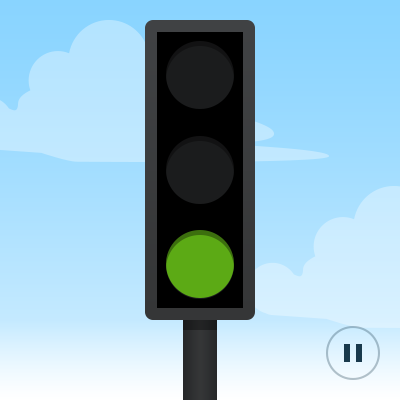Qt SCXML Traffic Light QML Example (Dynamic)

Traffic Light QML Example (Dynamic) demonstrates how to connect to the active properties of a state in a dynamically loaded state machine.
The UI is created using Qt Quick.
Running the Example
To run the example from Qt Creator, open the Welcome mode and select the example from Examples. For more information, visit Building and Running an Example.
Dynamically Loading the State Machine
We link against the Qt SCXML module by adding the following line to the example .pro file:
QT += qml scxml
We dynamically create the state machine in the main QML file:
import QtScxml 5.8 TrafficLight { StateMachineLoader { id: loader source: "qrc:///statemachine.scxml" } stateMachine: loader.stateMachine }
Connecting to States
In the SCXML file, we specify states for each light: red, yellow, and green. In the <onentry> element, we specify the event to send when entering the state and the delay in seconds before sending the event. In the <transition> element, we specify the event that triggers the transition to the state specified by the target attribute:
<state id="red">
<onentry>
<send event="startGoingGreen" delay="3s"/>
</onentry>
<transition event="startGoingGreen" target="redGoingGreen"/>
</state>
<state id="yellow" initial="greenGoingRed">
<state id="redGoingGreen">
<onentry>
<send event="goGreen" delay="1s"/>
</onentry>
<transition event="goGreen" target="green"/>
</state>
<state id="greenGoingRed">
<onentry>
<send event="goRed" delay="1s"/>
</onentry>
<transition event="goRed" target="red"/>
</state>
</state>
<state id="green">
<onentry>
<send event="startGoingRed" delay="3s"/>
</onentry>
<transition event="startGoingRed" target="greenGoingRed"/>
</state>We connect to the states as follows:
states: [ State { name: "Red" when: stateMachine.red PropertyChanges { target: redLight opacity: 1 } }, State { name: "RedGoingGreen" when: stateMachine.redGoingGreen PropertyChanges { target: redLight opacity: 1 } PropertyChanges { target: yellowLight opacity: 1 } }, State { name: "Yellow" when: stateMachine.yellow || stateMachine.blinking PropertyChanges { target: yellowLight opacity: 1 } }, State { name: "Green" when: stateMachine.green PropertyChanges { target: greenLight opacity: 1 } } ]
Files:
© 2017 The Qt Company Ltd. Documentation contributions included herein are the copyrights of their respective owners. The documentation provided herein is licensed under the terms of the GNU Free Documentation License version 1.3 as published by the Free Software Foundation. Qt and respective logos are trademarks of The Qt Company Ltd. in Finland and/or other countries worldwide. All other trademarks are property of their respective owners.
